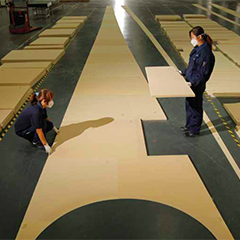We take a look forward to the ‘core’ of wind blade manufacturing technology and how it can contribute to reduce the Levelised Cost of Energy (LCoE).
In late 2013, PES published an article that discussed the ‘Core’ material in a blade. It examined the challenges for wind energy; composites as a technology; the rise (and fall) of the market; looking ahead; core as an engineering material; the composite production processes (infusion and prepreg); and finally, it focussed on total blade cost. This follow-up piece takes the examination a step further…
Construction
Blades use core materials (typically 60-150 kg/m3) as part of a sandwich structure comprising of resin and reinforcement on either side. The core is primarily a means to reduce the laminate weight, while sustaining the out-of-plane strength and rigidity.
The load carrying part of a typical blade consists of structural webs connected to monolithic girders to form an approximation of a ‘boxed beam’ which in turn is joined to the root end. The surrounding two-part shell transfers wind loads to the load carrying members while providing the optimum aerodynamic shape.
Core material is normally used in the following components, optimised to deliver the required design performance:
a) Webs – these typically use lighter IPN core in the 60-80 kg/m3 or PET (100-115) density ranges
b) Shell (Root-Shoulder) – this and its immediate adjoining spar/girder area is often referred to as the primary structural element of the blade, as here, the considerable forces and loading come to bear in service life. It is most common to find core materials in the 130-150 kg/m3 range used, be they balsa or IPN.
c) Shell (Shoulder-Tip) – these typically use a much lighter IPN core in the 60-80 kg/m3 density range, or PET at 100-115 kg/m3.














